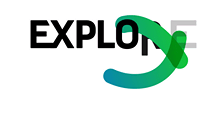

In hospitality, no two teams (or hotels) operate the same way.
This is especially true for marketing and sales teams, whose day-to-day decisions directly impact visibility, demand, and ultimately, revenue.
Whether you’re running a boutique hotel with a lean team or leading commercial strategy for a global portfolio, tracking the right key performance indicators (KPIs) is essential.
But the “right metrics” aren’t universal; they should reflect your goals, markets, and organisational structure.
That’s where customisable analytics come in.
In this article, we explore which KPIs and supporting metrics matter most for marketing and sales teams, and how tailored dashboards can help you interpret commercial data through the lens of your own actions, even when campaign-level details aren’t available.
Why sales and marketing teams need their own lens
Operations teams typically focus on cost control and guest experience. Revenue managers rely on demand, historical trends, and forecasting to optimise pricing. But marketing and sales? Their role is to generate and convert demand - shaping how, where, and from whom future revenue is created.
Despite this, many hotel teams still rely on generic dashboards that fall short of what commercial teams need, such as:
Evolution of key guest segments or source markets
Booking trends following promotional pushes
Revenue growth linked to high-priority channels or demographics
By customizing the view and digging deeper into guest behaviour and booking outcomes, sales and marketing teams can start to see how their work impacts performance, even without direct access to campaign data.
What marketing should track
In hotel marketing, success isn’t always straightforward. Campaign-level metrics like clicks or impressions are useful but often siloed, and may not answer the most important question:
Are our marketing efforts contributing to revenue growth?
Even without platforms like Google Analytics or Meta Ads Manager, you can still gain powerful insights by analysing how guest behaviour and bookings evolve over time.
Here are key marketing KPIs worth tracking to connect strategy with results:
Average booking value (ABV)
This metric provides a clear indicator of booking quality. Increasing ABV can be achieved through upselling, offering packages, targeting high-spending guests, or promoting higher room categories.Tracking ABV by channel, campaign, or even market can help you understand where premium bookings originate and how to replicate that success.
Performance by market or segment
Not all campaigns perform equally across regions or demographics. Visualising revenue by geography or segment (e.g., families vs. business travellers) helps you assess whether your messaging resonates and where to double down.Booking window, length of stay, and lead time
Understanding when and how guests book reveals how well your timing and offers align with their behaviour.For example, if you’re promoting early-bird deals, is lead time increasing? Are your localised campaigns shifting patterns in specific markets?
Pro tip: Cross-filter by nationality, source, or segment to evaluate if specific campaigns are moving the needle.
Market share overview
This KPI is critical for competitive positioning. It combines three indexes:MPI (Market Penetration Index): your occupancy share
ARI (Average Rate Index): your rate strength
RGI (Revenue Generation Index): your overall revenue competitiveness
With clear visual indicators (e.g., green = gaining share, red = losing), this helps you assess whether your positioning and promotional strategies are driving above-market performance.
Market share can be measured, of course, on the total hotel but also per segment, channel, or even by GDS.
Market share overview | Juyo Analytics
Market share overview
Even in the absence of traditional marketing KPIs, there’s plenty of value in tracking what happens after a guest engages - how they book, what they book, and how much they spend. These outcomes often provide more reliable indicators of marketing success than impressions or clicks.
With the right data tools, marketers can move beyond vanity metrics and get closer to what really matters: revenue impact and smarter decision-making.
What sales should track
In hotel sales, success isn’t just about lead volume. It’s about understanding which sources and segments drive real revenue and how to replicate that performance.
Even if you don’t have pipeline-level CRM data, tracking how revenue flows from different channels and how bookings evolve still uncovers key insights.
Here are some key sales-related indicators worth focusing on:
Revenue by lead source
Map revenue back to its origin - corporate RFPs, direct website inquiries, OTAs, and more.This helps you understand which channels deliver the highest return and allocate your budget more efficiently, reducing dependency on lower-margin sources and optimising your overall revenue strategy.
Top clients by revenue and efficiency
Not all clients bring equal value. Identify which accounts are more profitable by examining both their total revenue and rate efficiency. Rate efficiency shows the discount versus the hotel’s full rate, helping you understand which accounts contribute to a higher ADR.Such data helps you prioritise high-value clients, align your sales efforts, and create retention strategies tailored to your best-performing accounts.
Lead time
Track how far in advance different companies book. This insight helps your sales team plan outreach calendars more effectively and forecast pipeline closure rates with greater accuracy.
Net revenue
To gain a clearer view of account performance, remove acquisition costs from the equation. This approach helps you make profit-driven decisions instead of relying solely on top-line revenue. After all, generating revenue doesn’t always mean generating profit.Use case: targeting the right sales and marketing metrics
The challenge:
A regional hotel group with 12 city-centre properties across Europe noticed marketing spend was not clearly translating into booking growth. Meanwhile, their sales team lacked insight into which accounts were driving profitability or how lead times varied by segment.
The solution:
Using a custom analytics platform, the group created customized dashboards for marketing and sales, focusing on their unique KPIs.
The marketing dashboard showed:
ABV by market/channel - revealed which segments generated higher-value bookings.
Segment and regional performance - helped refine messaging and targeting.
Booking window and lead time trends - captured behavioural shifts post-campaign.
The sales dashboard showed:
Revenue by lead source - clarified the most valuable acquisition channels.
Top clients by revenue and rate efficiency - enabled better prioritisation.
Lead time by segment - improved pipeline planning.
Forecast accuracy tracking - enhanced budget confidence.
The result:
Within 30 days, the marketing team adjusted their offers to focus on high-ABV segments and refined timing based on lead time insights. The sales team prioritized outreach to the most profitable accounts and aligned efforts with forecast accuracy improvements. Both teams worked with a unified view of commercial performance, driving faster and better decisions.







